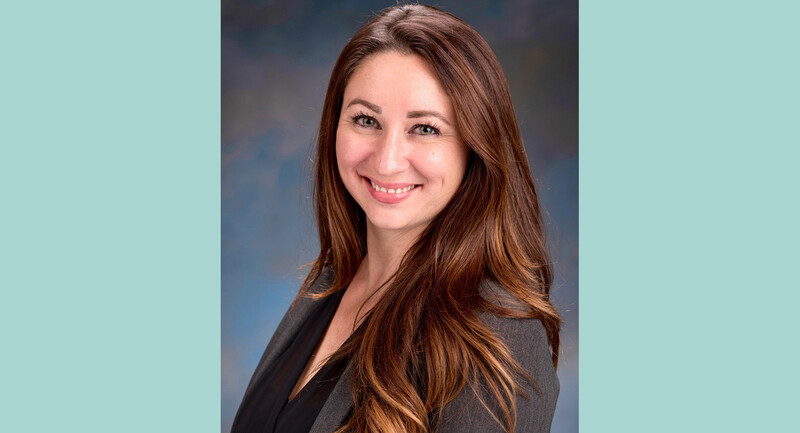Although it's not often acknowledged as such, poverty is an educational issue. Children from households in poverty frequently underachieve in school and are less likely to graduate from high school and to enroll in college (Reardon, 2013). These patterns are not new. In fact, they are so deeply entrenched in American society that they've been normalized and accepted as inevitable.
However, it is important to note that poor children frequently underperform academically not because they are inherently incapable of learning, but because they typically have other needs that make learning and concentrating in school more difficult. For this reason, several scholars and advocacy organizations have urged policymakers to reframe the problem of disparities in educational outcomes as one caused by gaps in opportunity rather than gaps in achievement (Education Trust, 2021). By calling attention to the lack of opportunities for children in poverty, we are better able to identify gross and blatant inequities in their experiences. For example, compared to more affluent children, kids living in poverty are more likely to experience food and housing insecurity, more likely to have unmet health needs, and more likely to be exposed to violence and suffer from adverse childhood experiences (O'Day & Smith, 2016). All these challenges have educational implications because they often undermine a child's ability to concentrate or attend school on a regular basis.
To make matters worse and more complicated, poor children are most likely to attend school with other poor children (Noguera, 2022). Throughout the United States, children who live in poverty tend to be concentrated in schools that lack the resources required to address their academic and social needs. Poor children, especially poor Black, Latino, and Native American children, are less likely to be taught by qualified teachers; less likely to attend schools equipped with libraries, laboratories, music programs or school nurses; and less likely to attend schools where Advanced Placement courses are offered (Bishop & Noguera, 2019). The concentration of poverty in America's schools, combined with the array of social and academic needs that are common among poor children, generally makes the task of addressing their educational needs more difficult.
An Accumulation of Disadvantages
For all these reasons, the challenges facing students in poverty and the schools they attend can be characterized as an "accumulation of disadvantages" that severely limits their opportunities within and outside of school.
Under U.S. education accountability laws, the schools where low-income children are concentrated are more likely than others to be labeled "failing" (Berliner, 2009). This labeling does nothing to address the problems facing these schools or the needs of their students. But because the accountability systems adopted by states utilize the same criteria (namely performance on standardized tests) to rate schools regardless of their composition (Noguera & Syeed, 2021), schools serving children in poverty are more likely to be subjected to sanctions, even though they rarely receive meaningful and sustained assistance to improve. Although a vast body of research has shown how poverty affects schools and child development, both federal and state education policy in the United States has largely ignored this research. This is all the more unconscionable given that the U.S. has one of the highest child-poverty rates among wealthy nations, with nearly 12 million children (or 1 of every 6) classified as poor, and as many as 52 percent of all children coming from households that qualify for free or reduced-price lunch (National Center for Education Statistics, 2021).
Nor is it surprising, given America's history, that poverty impacts some racial groups more than others. According to the National Center for Education Statistics (2019), 45 percent of Black children in America are enrolled in schools where 75 percent or more of the children qualify for free or reduced-price lunch. For Latinos, the figure is 43 percent.
By calling attention to the lack of opportunities for children in poverty, we are better able to identify gross and blatant inequities in their experiences.
A Legacy of Policy Failures
When the No Child Left Behind Act was enacted in 2001, with great fanfare and bipartisan support, many skeptics, particularly those of us who had worked for many years in America's urban schools, questioned whether its focus on academic standards and professional accountability would be enough to significantly improve outcomes for children in poverty. Our skepticism was rooted in an understanding that poor children needed much more than the law provided. From our knowledge of the research and our direct experience, we knew that the harsh social conditions in most of America's cities, where poverty is concentrated and pervasive, mean that children need both a challenging, academically enriched education and a variety of social supports. These supports include high-quality preschool and after-school programs; arts, music, and sports programs; and supplemental nutrition, healthcare, and counseling. Neither NCLB nor successor federal initiatives such as Race to the Top and The Every Student Succeeds Act have offered these to high-poverty schools (Hill, Jeffries, & Murray, 2017).
The failure of U.S. education policy to address poverty has contributed to the lack of progress that has become glaringly evident. A 2021 report by the Children's Defense Fund found:
Less than half of children born into household and neighborhood poverty are ready for school at age five, compared with 78 percent of their wealthier peers.
More than 75 percent of lower-income 4th and 8th grade public school students were not proficient in reading or math in 2019, compared with less than 50 percent of higher-income 4th grade and less than 55 percent of higher-income 8th grade students.
More than 77 percent of Hispanic and more than 79 percent of Black 4th and 8th grade public school students were not proficient in reading or math in 2019, compared with less than 60 percent of white students.
During the 2017–18 school year, 19 percent of Black, 21 percent of Hispanic, and more than 26 percent of American Indian/Alaska Native public school students did not graduate on time, compared with only 11 percent of white students.
Today, dropout rates for students 16- to 24-years-old who come from low-income families are seven times higher than those from families with higher incomes.
The list of supports required to address the needs of students living in poverty may seem daunting and expensive, but it's important to recognize that failure in education is expensive, too. The societal costs associated with failing to adequately educate kids may be harder to detect, but they show up in patterns of unemployment, persistently low wages, high incarceration rates, and the large number of people (37 percent of individuals 16–65) who are not in the labor force at all (Desilver, 2014). By some estimates, the economic costs of our education system's failure to adequately address achievement gaps amounts to trillions of dollars per year (Auguste, Hancock, & Laboissiere, 2009).
Of course, the burden of meeting the needs of students in poverty shouldn't be entirely on schools. After all, schools can only do so much to alleviate the effects of poverty. Ideally, if the political will and commitment to reduce poverty were stronger, state and federal governments would adopt a variety of social policies (such as expanding the availability of affordable housing and childcare, increasing wages for low-wage workers, and reducing healthcare costs) to reduce poverty throughout society. In fact, the U.S. made its greatest gains in closing gaps in student achievement during the 1960s and early 1970s, when an array of investments in social supports and economic opportunity were made as part of the "War on Poverty" (Barton & Coley, 2010). Though the "war" ended in the mid-1970s, poverty didn't, and though the community-schools initiative has been embraced in many areas as a solution, at best, it offers only part of what is needed to achieve greater progress.
Nonetheless, most educators understand that we can't afford to wait until the political will for a national commitment to address the educational and social needs of poor children is mustered. In the absence of national leadership, schools can still develop strategies that make it possible to mitigate the effects of poverty and provide enhanced learning opportunities for low-income students. The good news is, there is evidence that when significant supports are in place, schools can play a role in improving learning outcomes and advancing opportunities that promote social mobility (Blankstein & Noguera, 2016). There are, in fact, a small number of U.S. schools today that have implemented a strategy of providing both academic enrichment and social supports to generate sustained improvement in academic outcomes and school performance. While the achievements of such schools are noteworthy and commendable, the question remains: Can initiatives of this kind be implemented at scale?
The Chancellor's District: The Dual Approach in Practice
An ambitious program launched in New York City in the late 1990s suggests the answer to that question is yes—if education leaders can sustain support for and momentum on far-reaching interventions.
In 1996, when coauthor Rudy Crew was the chancellor of New York's public schools, he created what became known as the Chancellor's District, a specially designated district within the larger district that comprised New York City's most poorly performing public schools. Not surprisingly, these schools served many of New York's most disadvantaged children and were located in the poorest neighborhoods. The goal of the initiative was to accelerate improvement among these schools through a combination of academic enrichment and enhanced social support. The plan called for a centralized management structure to help coordinate and support targeted resources and programs for the students. The leaders of the schools reported directly to the chancellor.
The Chancellor's District initiative lasted for seven years. It represented an unprecedented intervention in school governance, as well as a unique approach to large-scale reform and school improvement. In 1999, the 47 schools selected to be part of the Chancellor's District began implementing what was called the new Model of Excellence (Cutler, Glaeser, & Vigdor, 1999). The model included the following components:
Reduced class sizes. Class sizes were capped at 20 students in grades K–3, and 25 students for grades 4–8.
Increased instructional time. The school day was extended to be 20 minutes longer than in other elementary and middle schools, and the school year was extended by one week.
After-school programs. Each school was provided after-school programs to enhance and enrich daily learning, extending the school day to 6 p.m. Tutoring was offered from 3 to 4 p.m. in small-group settings for students in grades 3–5 who required extra reading or math assistance. Additionally, specialized mentoring programs and health and social services for children and families were provided through the after-school programs.
Uniform curriculum. To create curricular coherence and focus, the school used a prescribed instructional program that mandated two daily 90-minute literacy blocks (using the Success for All and Balanced Literacy programs), plus two literacy-skills blocks per week in middle schools. The daily schedule also included a 60-minute math block (using the Trailblazers math program) and a 30-minute skills block, which alternated between math and literacy skills. Classes in science, social studies, art, foreign languages, and physical education continued on a regular basis as required by the state.
Intensive professional development and teacher support. The district provided intensive PD to all teachers at the schools, and each school was assigned at least four on-site staff developers focused on English language arts, mathematics, technology, and implementation of the curricular changes. Extra time was provided for this professional development, which was designed to be systematic, structured, and aligned with the curriculum. Each school was also provided with an on-site teacher specialist who gave teachers additional coaching and professional development. Finally, each school was provided additional school-based supervisory personnel and extensive instructional support from the central administration.
The Institute for Education and Policy Studies at New York University conducted an evaluation of the Chancellor's District from 1996 to 2003. The study compared the performance of schools in the Chancellor's District to that of other schools designated by the state of New York as mandated for improvement. It found that the percentage of 4th grade students in Chancellor's District schools meeting the state's reading standard increased significantly more than did the percentage of 4th grade students meeting that standard in the other schools. By 2001–02, more students met the reading standard in Chancellor's District schools (30 percent) than in schools in the control group (27.2 percent) (Phenix et al., 2004). Though math outcomes in the Chancellor's District schools remained below the citywide average, attendance and discipline-referral rates improved and students' course grades rose, providing clear evidence that the initiative was beginning to make an impact.
The challenges facing students in poverty and the schools they attend can be characterized as an 'accumulation of disadvantages.'
Despite those gains, the Chancellor's District initiative was terminated in 2003 when a new chancellor was appointed, and a mayoral-controlled system was established for the purpose of restructuring the system and increasing accountability in the city's schools. The shift in direction can be explained by the tendency of local education leaders to initiate new reforms without taking stock of the progress of previous reform initiatives.
It's important to note, however, that not long after the Chancellor's District was sunsetted, another ambitious school-based anti-poverty initiative was launched in New York. Known as the Harlem Children's Zone (HCZ) and led by renowned educator Geoffrey Canada, HCZ adopted an approach similar to that utilized by the Chancellor's District. HCZ directed an array of educational enrichments and supports to over 6,000 children at schools in central Harlem (Tough, 2009). HCZ has been widely heralded as the most effective strategy created to address the educational and social needs of poor children. Although HCZ served as the model for President Obama's Promise Neighborhood Initiative, that program was never funded adequately by Congress, and HCZ has never been replicated at a similar scale in other communities.
Generating the Will for Change
Although we don't subscribe to conspiracy theories, we also don't believe that the failure of schools that serve disproportionate numbers of poor children is accidental or the result of professional incompetence. In a wealthy, technologically advanced nation such as the United States, the only logical reason why failure among schools serving poor children is so common is that we simply haven't been able to generate and sustain the will to meet the needs of poor kids.
Twenty-one years after NCLB was enacted, it's clear that the law and kindred policy initiatives to strengthen school accountability have failed to achieve their grand promises. The failure of policymakers to adopt more far-reaching strategies to mitigate the effects of poverty on learning has allowed those with the most power—including governors and state legislatures—to avoid accepting any responsibility for improving the lives of poor kids or to adequately support the schools they attend.
This is why it's important to recognize that the biggest obstacles to educating poor children are actually political, not educational. This doesn't mean that educating poor children is a simple task. As we've stated, poverty impacts child development in a variety of ways, and when children arrive at school with unmet basic and social needs, it always makes the job of educating them more difficult. However, poverty remains an educational issue in the United States because our policymakers have not committed themselves and the vast resources of this nation to fighting it.
Lack of coordination is a key part of this failure. In many cases, policy strategies ostensibly aimed at alleviating poverty more often perpetuate poverty because the services provided by public agencies and nonprofits to poor children and their families operate in silos. More often than not, the health and social service providers and city and county services are disconnected from the education system where poor children are present for 180 days a year or more. We now know that reducing poverty and improving outcomes for poor children, both academic and developmental, requires more than increased funding. As the example of the Chancellor's District shows, a coherent plan at the school district level and better coordination among service providers are key to improving outcomes at scale.
Indeed, we believe the primary potential for real change lies within the education system. Education leaders, teachers, unions, parents, and governing bodies must be part of the effort to change and improve high-poverty schools. When schools are unable to meet the instructional needs of children, or when classroom teachers and school leaders are insufficiently trained and incentivized, children in poverty continue to languish and remain behind. We must make the status quo unacceptable.
With the increased federal funding and talk of "building back better" in the post-COVID-19 period, it might be possible to gain ground on the unequal playing field of poverty and schooling. But school systems still need a comprehensive strategy. Small and incremental fixes like a new reading program, more technology, or safer classrooms may all be needed, but they must be part of a coordinated, comprehensive anti-poverty strategy that is pursued throughout the nation.
Recent data from the National Assessment of Education Progress shows that the pandemic exacerbated pre-existing disparities in student achievement, and that poor children again experienced the greatest losses (Modan, 2022). This makes the problem all the more urgent. To meet the challenges of the present moment, our country needs vision, institutional engagement, collaboration across sectors, political leverage, and incentives to truly leave no child behind. To produce the writers, technologists, scientists, musicians, plumbers, farmers, entrepreneurs, and untapped talent that our economy needs, we have to go all-in to fight poverty.
Reflect & Discuss
➛ Do you agree with the authors that U.S. education policy has not been aligned with the needs of students in poverty? If yes, why do you think this is?
➛ Where do you think your own school or district has gaps in its programs for students in poverty?
➛ How could services for students in poverty in your school community or district be better coordinated and delivered?









